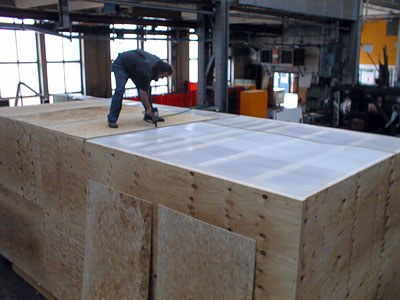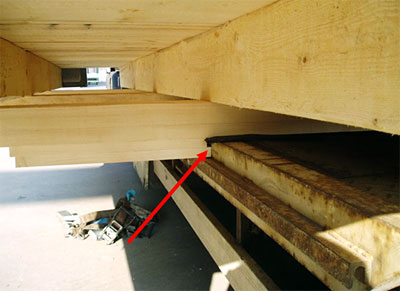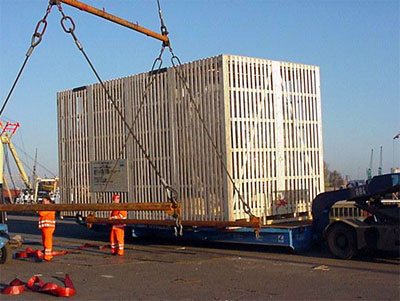The general design principles and rules for slinging also apply for high-volume boxes/crates. The difference is that the dimensions of such packages mean that they are overwidth when being transported by road with trucks and flat racks. This has to be taken into account with respect to securing the load. Irrespective of the gross weight, a problem sometimes arises when handling such boxes with forklift trucks in that the packages are often so wide that only special forklift trucks can be used which have sufficiently long forks. 
Figure 89: High-volume box The effort involved in manufacturing the lid in such a way that it is able to withstand loads of up to 1.8 t/m² is significant with large-area lids. If the lid is not designed in such a way that the box/crate allows other cargo to be stowed on top of it, this must be clearly indicated by instructions and markings. 
Figure 90: Tight-fit securing Figure 90 illustrates how to secure and overwidth box to the side on a flat rack by attaching restricting battens under the transverse skids. 6.8 Special considerations with crates The same principles apply to the components of crates as to the components of boxes. Unlike boxes, the outer solid-lumber cladding is not closed. The ratio of the closed area to the open area lies between 1:1 and 2:1, meaning that the gaps between the individual boards can be between half the width of a board and the full width of a board. The width of a board should not be less than 10 cm. The cladding of the floor is generally the same as that of the walls and the lid, but can also be closed if necessary. Because the walls are only partially clad, any markings must be applied to special services, for instance to weather-resistant plywood or OSB sheets which are then attached to the wall surfaces. 
Figure 91: Crate construction |
| Top of pageContents |
